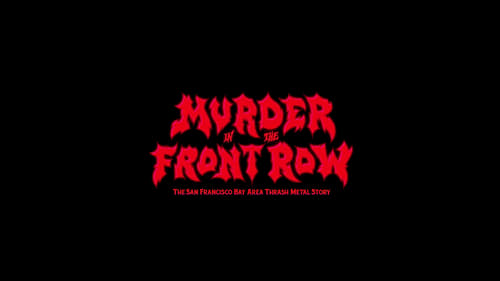
Director of Photography
Murder In The Front Row: The San Francisco Bay Area Thrash Metal Story. In the early 1980’s, a small group of dedicated Bay Area headbangers shunned the hard rock of MTV and Hollywood hairspray bands in favor of a more dangerous brand of metal that became known as thrash! From the tape trading network to the clubs to the record stores and fanzines, director Adam Dubin reveals how the scene nurtured the music and the music spawned a movement. Murder In The Front Row is told through powerful first person testimony and stunning animation and photography. The film is a social study of a group of young people defying the odds and building something essential for themselves. Featuring interviews with Metallica, Megadeth, Slayer, Anthrax, Exodus, Testament, Death Angel, Possessed and many more! Narrated by Brian Posehn.

Cinematography
Surviving Skokie, an intensely personal documentary, explores the effects of a late 1970s threatened neo-Nazi march in Skokie, IL on its large Holocaust survivor population. Thousands of survivors comprised 10 percent of this Chicago suburb, including Jack, the father of co-producer, Eli Adler. The relationship between father and son deepens as they return to Poland, where Eli learns more about the extended family that perished during the Shoah. Together they retrace the painful and debilitating journey through two ghettos and two concentration camps. Included are poignant commentaries and archival footage of the historical events spanning 70 years and two continents.

Producer
Surviving Skokie, an intensely personal documentary, explores the effects of a late 1970s threatened neo-Nazi march in Skokie, IL on its large Holocaust survivor population. Thousands of survivors comprised 10 percent of this Chicago suburb, including Jack, the father of co-producer, Eli Adler. The relationship between father and son deepens as they return to Poland, where Eli learns more about the extended family that perished during the Shoah. Together they retrace the painful and debilitating journey through two ghettos and two concentration camps. Included are poignant commentaries and archival footage of the historical events spanning 70 years and two continents.

Director
Surviving Skokie, an intensely personal documentary, explores the effects of a late 1970s threatened neo-Nazi march in Skokie, IL on its large Holocaust survivor population. Thousands of survivors comprised 10 percent of this Chicago suburb, including Jack, the father of co-producer, Eli Adler. The relationship between father and son deepens as they return to Poland, where Eli learns more about the extended family that perished during the Shoah. Together they retrace the painful and debilitating journey through two ghettos and two concentration camps. Included are poignant commentaries and archival footage of the historical events spanning 70 years and two continents.

Surviving Skokie, an intensely personal documentary, explores the effects of a late 1970s threatened neo-Nazi march in Skokie, IL on its large Holocaust survivor population. Thousands of survivors comprised 10 percent of this Chicago suburb, including Jack, the father of co-producer, Eli Adler. The relationship between father and son deepens as they return to Poland, where Eli learns more about the extended family that perished during the Shoah. Together they retrace the painful and debilitating journey through two ghettos and two concentration camps. Included are poignant commentaries and archival footage of the historical events spanning 70 years and two continents.

Director of Photography
Auschwitz-Birkenau was designed to kill. Four gas chambers murdered thousands at a time, belching out smoke and human ashes. Starvation, thirst, disease, and hard labor reduced the average lifespan to less than three months. More than 1-million people perished in the largest German Nazi concentration and extermination camp. Seventy years after her liberation, Kitty Hart-Moxon makes a final return to Auschwitz-Birkenau to walk among the crumbling memorial with students Natalia and Lydia, who, at 16, are the same age now as she was then. As Kitty tells them her story of daily existence, themes begin to emerge: the ever-present threat of death, resilience, friendship, human strength, resisting the Nazis' constant lethal intent, and living like an animal while still remaining human. Natalia and Lydia ask questions; Kitty provides answers, passing her legacy to the next generation.

Cinematography
On the 35th anniversary of the release of the landmark film "The Godfather," (March 15, 1972) we look back at the time and place of the film's conception and shooting.

Cinematography





